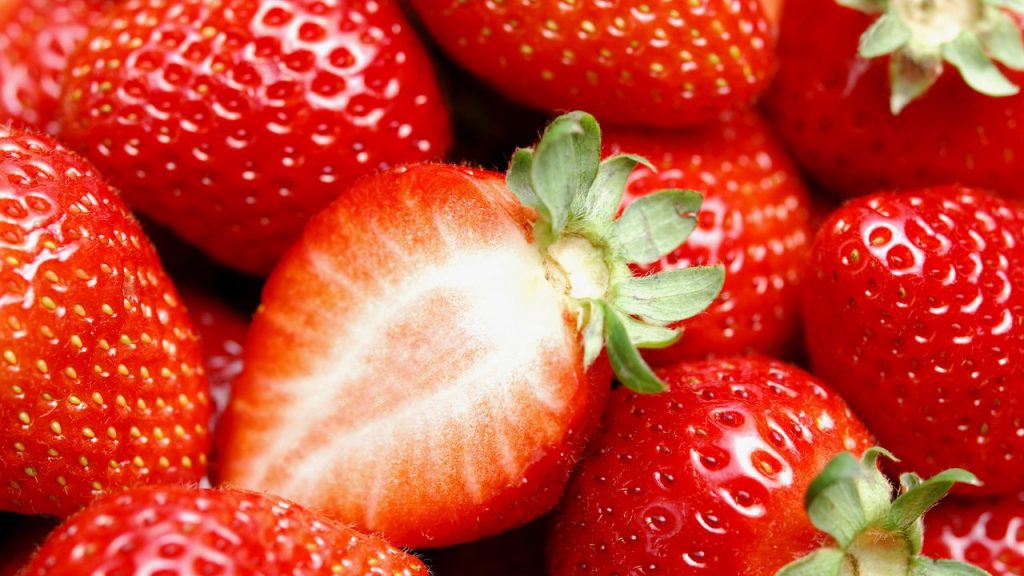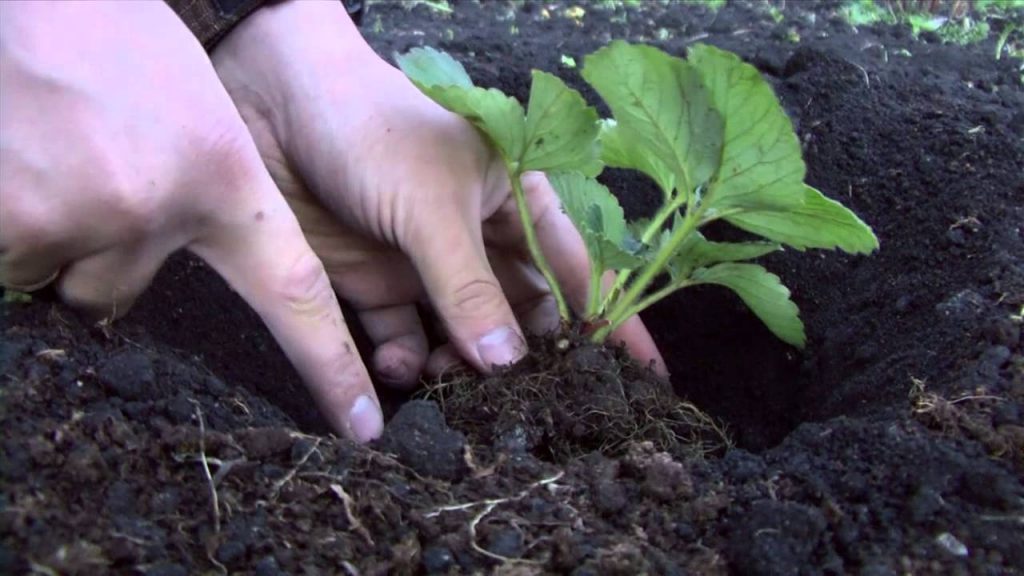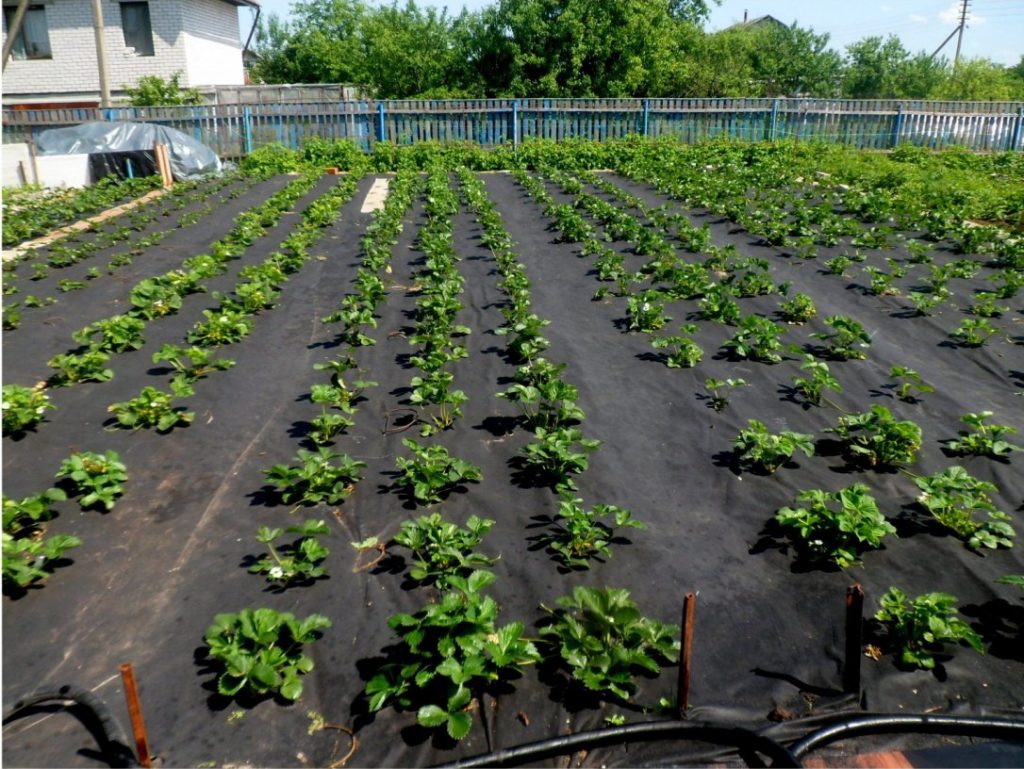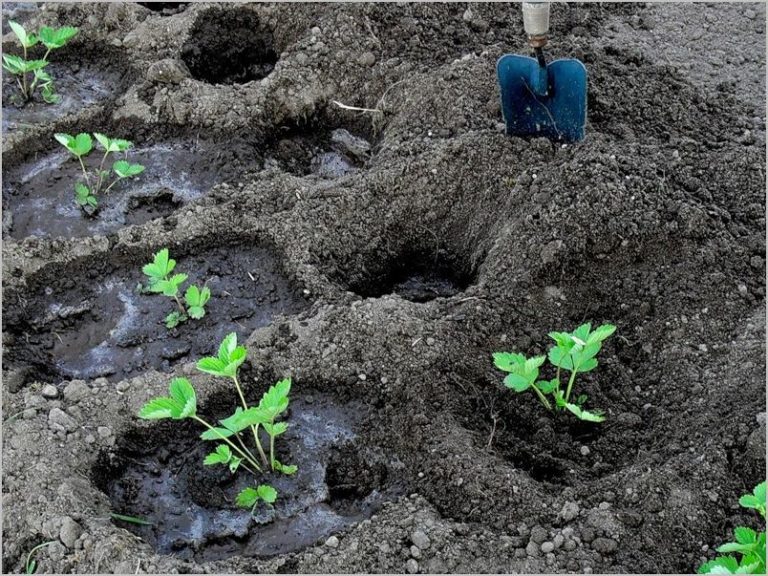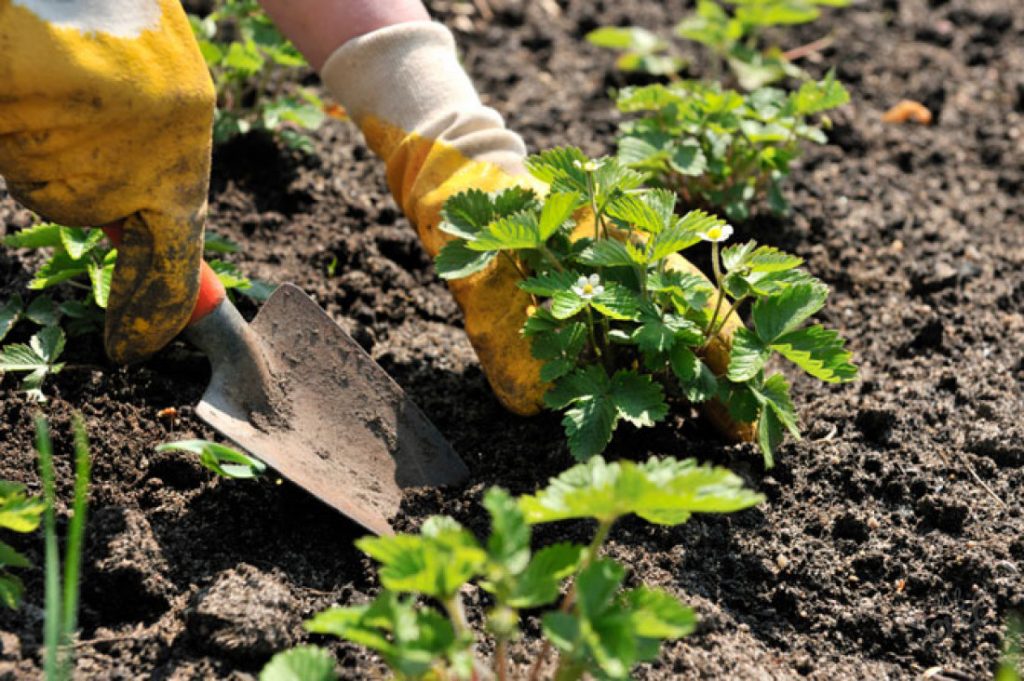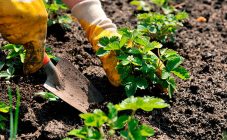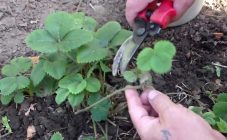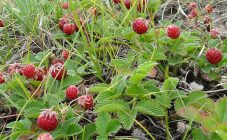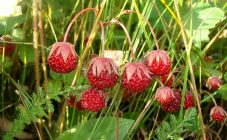Content:
Strawberries are considered a wealth of the garden. Its scarlet fleshy berries are among the first to ripen. It is important for a gardener to know when to transplant strawberries, how the correct planting takes place. The harvest directly depends on these activities.
Culture information
Strawberries, which are grown all over the world, actually have an official name - garden strawberries. Another name for it is pineapple strawberry. The plant represents the Pink family. The peculiarity of garden strawberries is that if conditions allow, then berries can be obtained from the bush throughout the year. The originality of this plant is in its seeds. They are found on the outside of the berry, and not inside, as in most crops.
Popular varieties
- Gigantella;
- Olbia;
- Diamond;
- Kimberly.
Gigantella
One berry can grow to a size larger than a hen's egg. Average weight - 70-90 grams. The variety also has large leaves. Gigantella needs a lot of space. No more than three bushes can be planted on one square meter of land. The variety is picky about watering.
Olbia
This variety can be recognized by the berries of the correct shape. They are medium in size and shiny. The mass of one strawberry is 25-40 grams. The main plus of Olbia is its fearlessness in the face of frost or extreme heat.
Diamond
This variety practically does not suffer from common diseases. It is not affected by root rot, verticillary wilting, powdery mildew, etc. Berries of medium size, fragrant.
Kimberly
This variety is popular for its sweet caramelized berries. There is practically no Kimberly equal in sweetness. Another advantage is early ripening. The strawberries are picked in early June. Bushes can bear fruit within a month.
What is a strawberry transplant for?
Strawberries are considered a fast growing berry. Its fruiting occurs one year after planting. Accordingly, the culture is rapidly growing and aging. For 3 years, the bush turns into a mighty thicket with an abundance of mustaches. This is how both the usual type of strawberry and the remontant one behave. As a result, the plant becomes cramped in its place. It does not receive the required amount of nutrition and moisture. The berries are getting smaller. After 5-8 years, the culture may stop blooming altogether. In order not to be left without delicious garden strawberries, a transplant is required.
Transplanting means propagation of a culture. Thus, a garden bed with young bushes appears in the garden, which are ready to give a bountiful harvest.
How to make a transplant correctly
Transplantation or reproduction is done in several ways, each of them has its own characteristics, pros and cons. There are only three ways:
- Mustache;
- By dividing the roots;
- Seedlings grown from seeds.
Mustache
This method is considered the most effective and easy to produce. To do this, you need to grow a young seedling from a mustache.
- A powerful, well-bearing plant is selected.
- All whiskers should be removed from him, except 2-4, the most formed. Peduncles are also cut off.
- Each mustache is examined. The first rosette of the mustache is buried in the soil or pot of soil mixture. The process resembles the propagation of berry bushes by layering. The rosettes are fixed in the middle of the pot with potting soil or near the ground.
- Near the place where the socket is fixed, the mustache is cut off. The main thing is not to cut it from the side of the mother plant. Pruning the shoot is necessary so that the power goes to the development of the roots at the outlet.
- The gardener should water the socket every day.
- After 30-50 days, the plant will fully take root. If it is in a small glass or pot, then its roots will fill the entire container.
- After rooting has taken place, the mustache is allowed to be cut from the mother plant. The seedling is ready for transplanting.
By dividing the roots
The bush is dug out of the soil. The roots are slightly shaken off the ground. The bush is placed in a bowl of water. The roots are washed. All old, dry branches and mustaches are removed. Next, it is worth examining the bush. He himself will tell you how best to divide it. The fact is that some roots (horns) are easily separated from the main root. The main thing is to notice that the new bushes have sufficiently developed roots and apical bud.
Several leaves and stems are left on each bush. Dark roots are removed. The plant takes root best if it only has light roots.
Before planting, the roots are soaked in a growth stimulator. Before planting, you can bathe them in a chatterbox of manure, clay and water.
The disadvantage of this method is that even after dividing, the old bush does not bear fruit as well as young bushes obtained from whiskers or seeds. The advantage of the method is that if the planting was carried out in the spring, then in the summer the young bushes will give the first berries.
Seedlings grown from seeds
It is recommended to buy seedlings from a specialized store or grow them yourself. The seeds are also sold at retail outlets. Seeds are sown from January to March. In order for the seedlings to grow healthy and strong, they need good care. It includes frequent watering, top dressing with Solution, Aquarium, hardening. Planting takes place in warm soil, when 6-8 strong leaves appear on the bush.
Transplanting seedlings
How to transplant strawberries? Regardless of the breeding method, the transplant is carried out using a universal technology.
Preparing the garden
The garden bed, on which the berry will be, must be carefully dug up and fertilized. For one square meter, 3-4 kg of humus, 4 glasses of fly ash, 1-2 buckets of peat, 45-60 grams of superphosphate are taken. Everything is dug up and abundantly spilled with the microbiological preparation Fitosporin. The tool disinfects the soil from fungi and bacteria. After all the measures for preparing the garden have been carried out, it is left for 72 hours. As soon as this time is over, the bushes can be planted.
Distance between bushes
The bushes need to be planted correctly. Do not thicken the landing area too much. The optimum distance between seedlings is 30-40 cm. Between rows is 60-80 cm.
Planting process
- Holes are being prepared. They are made, depending on the rootstock of the seedling. Approximately 15-20 cm.
- Wells are watered with warm water.
- The lower part of the plant is placed in them.
- It is important that the root is not curved, but placed in the fossa in a straight upright position.
- The plant's growth point (heart) should be level with the soil. If it is above ground level, the bush may dry out or freeze in the cold season. If the heart is too deep, then the bush can rot and rot.
- Next, the root is covered with soil.
- The land is mulched with peat or straw.
- Water the strawberry garden with young plants every day. Watering should be sufficient, but it is impossible to overmoisten the ground.
Transplant timing
When is the best time to transplant strawberries? Three options are allowed:
- In the spring;
- Summer;
- Autumn.
In the spring
Before replanting strawberries in a new place in the spring, you should determine the best time for this. It all depends on the region. For example, Krasnodar Territory and other southern regions start the process earlier than the rest of Russia. Usually, strawberries are propagated in warm regions in March.
The central part of Russia can begin to grow strawberries at the end of April. May is fine. Siberia is the most recent to start a berry plant transplant. Inhabitants of the north go to their gardens in May, early June.
However, regardless of the region, the transplant period is also determined by climatic conditions. The strawberries are placed in the soil that has already thawed and warmed up a little. The air temperature at this moment should be about + 5 ... + 10 degrees and go up.
In the spring, transplanting a culture is allowed by dividing the roots of the bush, as well as planting seedlings. It will not be possible to propagate a mustache, since it is possible to root a mustache or several mustaches only in the summer season.
The advantage of spring planting is that you can get the first harvest in the summer. The bushes take root well due to the fact that it is not too stuffy outside, and the ground is wet after the snow melts.
Summer
August is a good month to plant a mustache crop. You can also plant seedlings sown in April, May, or divide the roots of the plant. But this time has many disadvantages. Among the most obvious:
- The weather is too warm. If the summer is sultry, then the heat will dry out the plant, which actively releases moisture through the leaves.
- The strawberry garden will need to be watered constantly (2 times a day). In this case, watering should be in the form of shallow sprinkling. Also, be sure to hide it from direct sunlight.
In autumn
The correct month for fall planting is September. However, autumn is not suitable for northern regions. Siberia is famous for its frosts, which can come even in autumn. And seedlings for rooting in a new place need at least 30 days without frost. The advantages of this time of year are that you can use any planting method that the summer resident likes best. Either seedlings grown from seeds, or mustache seedlings, or by dividing the bushes.
In addition, it is quite comfortable in the fall in central Russia and in the south. Mild weather and frequent rains will help the culture take root faster.
How to harvest correctly
Each variety has its own ripening time. The berries, which are already ready to be removed, are bright red without green blotches. They should not be tough.
The correct collection of berries takes place with the help of garden tools. It is best to use scissors. The berries are carefully separated from the main bush and cut with the stalk. It is not recommended to wrap your hands around garden strawberries. This way the strawberries will last longer.
Experienced gardeners advise harvesting not in buckets, but in wooden boxes or boxes. The berries are laid out in one or two layers. The collection process should take place on a clear day without rain.
In order for the culture not to degenerate and always bear fruit well, it is important to know when to plant strawberries. Also, the gardener must choose the right place and correctly plant young bushes. Only in this case, the plant will quickly take root, and berries will appear on it.
